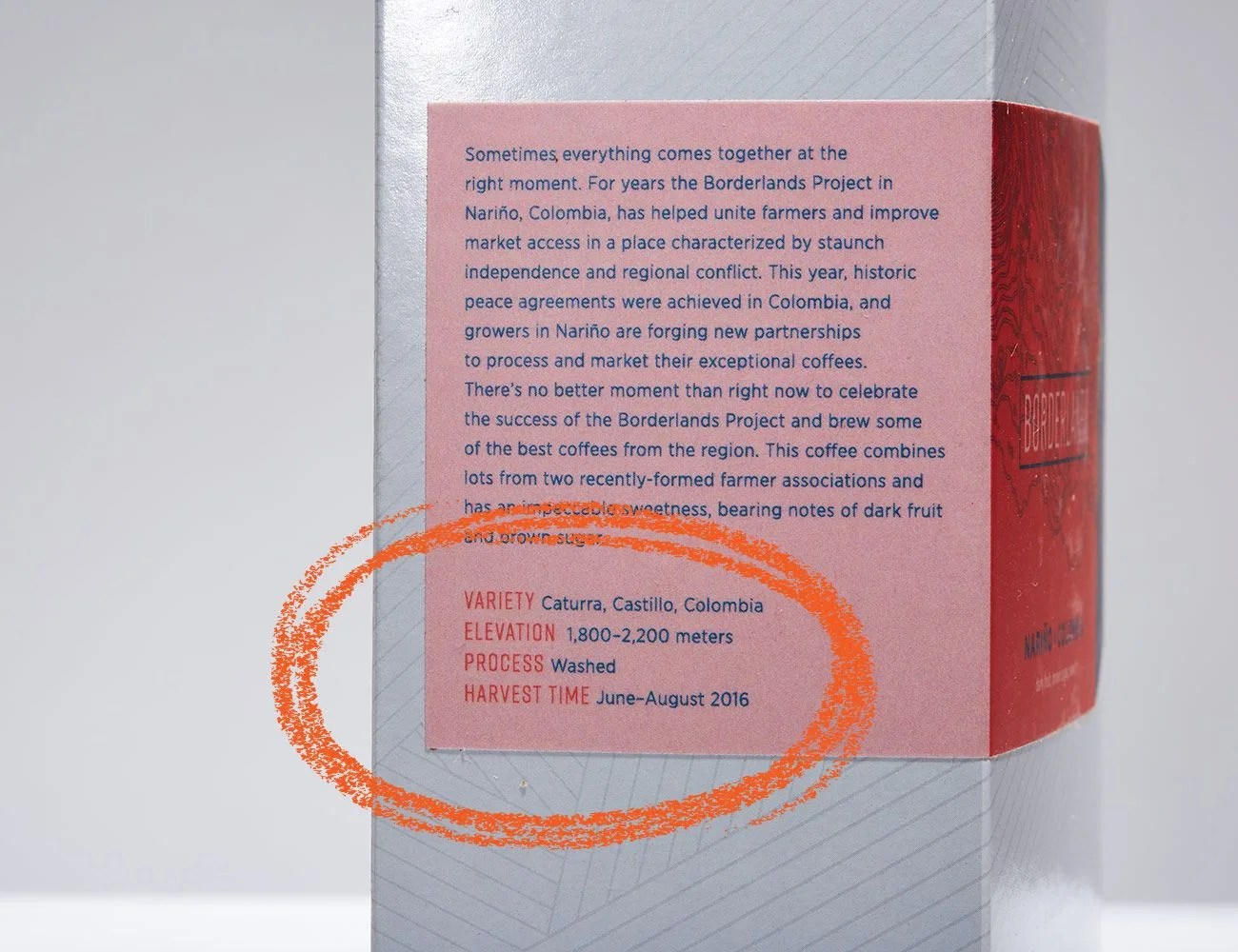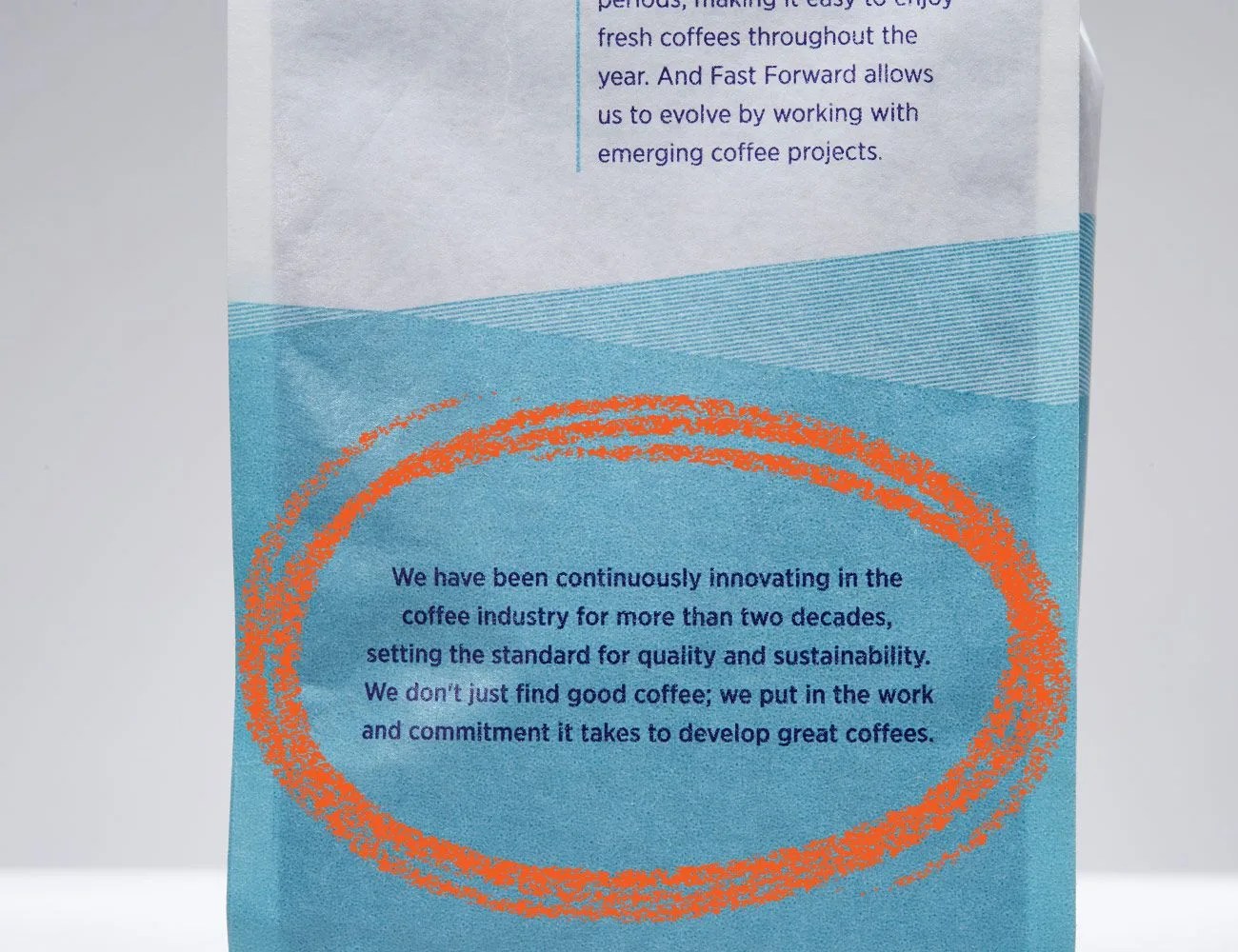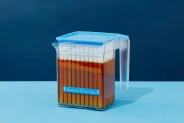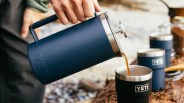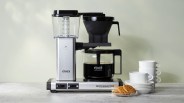When staring down a wall of jargon-strewn bags filled with small-batch coffee, it’s difficult to know where to start. There’s no harm in grabbing whatever seems most interesting, but isolating certain details — such as roast date and country of origin — can give you a better sense of what you’re buying, and the kind of coffee you’ll ultimately brew from it.
Thomas Costello, formerly of Counter Culture Coffee, a North Carolina–based roaster that heralded coffee’s third wave in 1995, outlined three pieces of information to look for on a bag of coffee beans that are most often reflective of quality.
1. Roast date
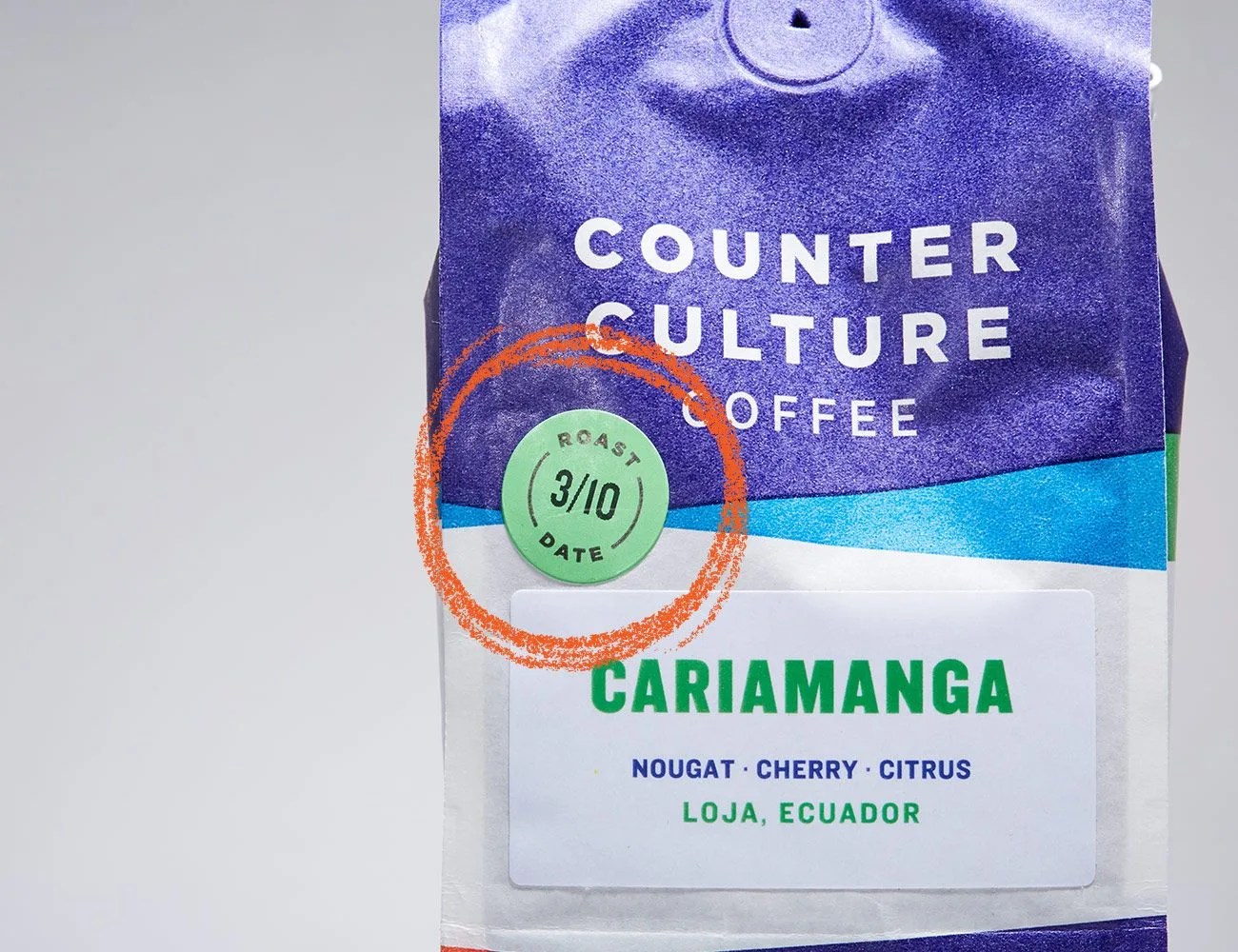
“Look for something that’s [been roasted] at least within the month, if not within the week,” Costello said.
Coffee takes 48 to 72 hours to de-gas, or settle, after roasting. Consume coffee too close to the roast date, and you’ll end up with an uneven extraction; wait more than a few weeks, and the beans will have released too much carbon dioxide, setting them past peak freshness.
Coffee takes 48 to 72 hours to de-gas, or settle, after roasting.
Packaging contributes to freshness, as well. Counter Culture’s beans are packaged in non-porous Biotré bags with a one-way valve, preventing air from passing through but allowing carbon dioxide to escape during de-gassing. Look for a resealable container, whether a zip closure, twist-tie or tin.

